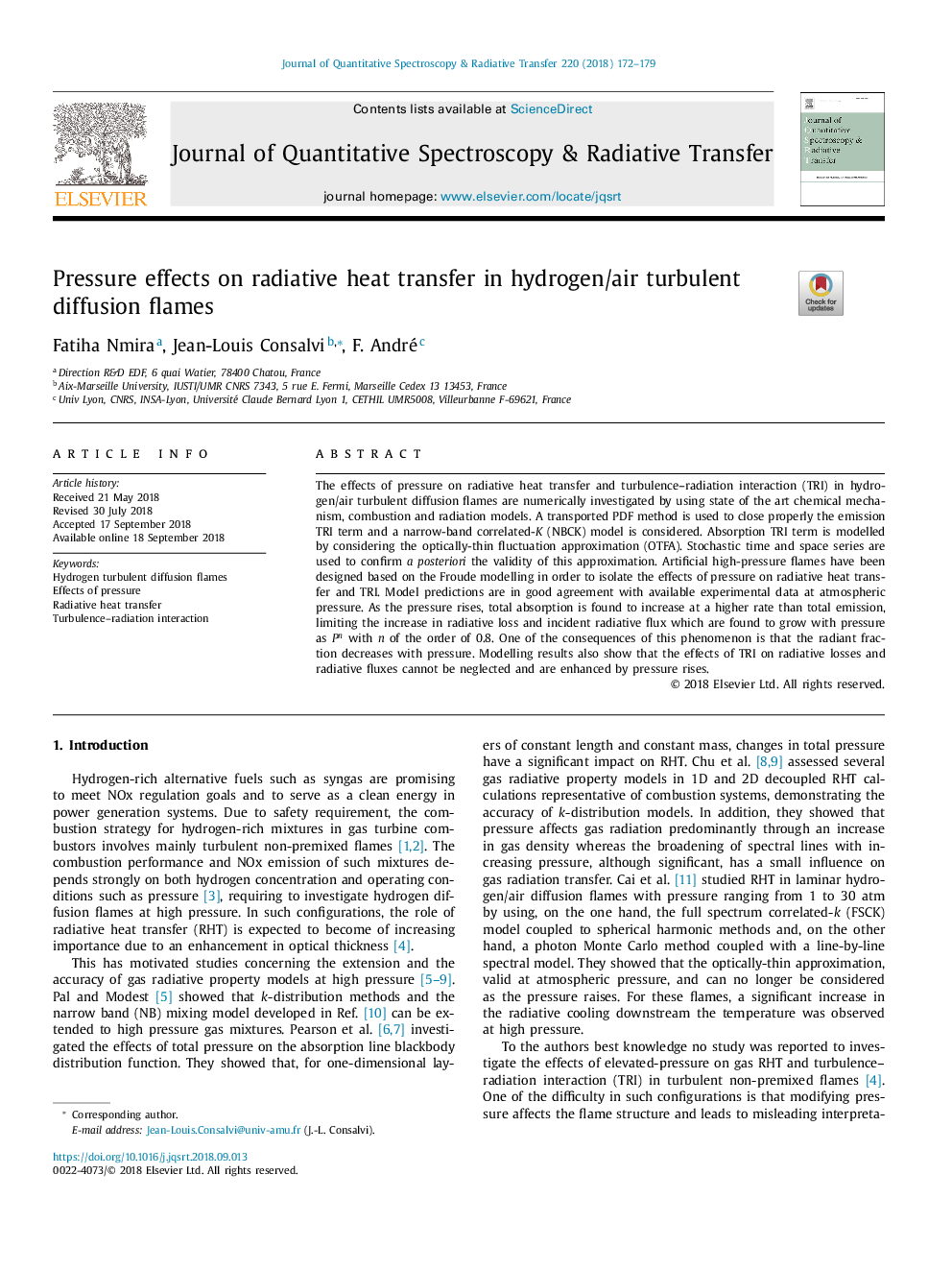| Article ID | Journal | Published Year | Pages | File Type |
|---|---|---|---|---|
| 11026893 | Journal of Quantitative Spectroscopy and Radiative Transfer | 2018 | 8 Pages |
Abstract
The effects of pressure on radiative heat transfer and turbulence-radiation interaction (TRI) in hydrogen/air turbulent diffusion flames are numerically investigated by using state of the art chemical mechanism, combustion and radiation models. A transported PDF method is used to close properly the emission TRI term and a narrow-band correlated-K (NBCK) model is considered. Absorption TRI term is modelled by considering the optically-thin fluctuation approximation (OTFA). Stochastic time and space series are used to confirm a posteriori the validity of this approximation. Artificial high-pressure flames have been designed based on the Froude modelling in order to isolate the effects of pressure on radiative heat transfer and TRI. Model predictions are in good agreement with available experimental data at atmospheric pressure. As the pressure rises, total absorption is found to increase at a higher rate than total emission, limiting the increase in radiative loss and incident radiative flux which are found to grow with pressure as Pn with n of the order of 0.8. One of the consequences of this phenomenon is that the radiant fraction decreases with pressure. Modelling results also show that the effects of TRI on radiative losses and radiative fluxes cannot be neglected and are enhanced by pressure rises.
Related Topics
Physical Sciences and Engineering
Chemistry
Spectroscopy
Authors
Fatiha Nmira, Jean-Louis Consalvi, F. André,
